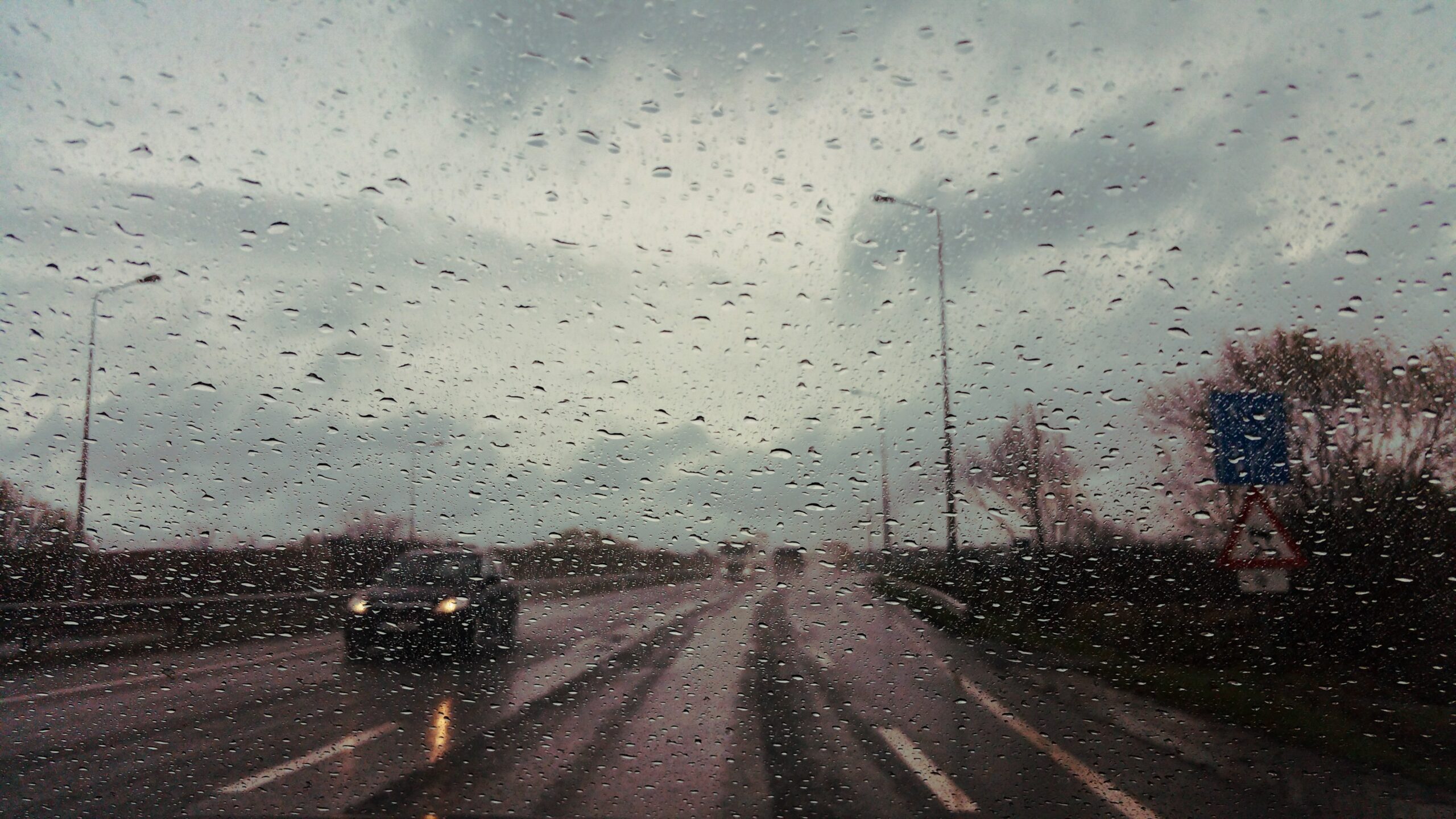Driving in the Rain: Seven Crucial Safety Tips
Driving in the rain, especially for the first time or on unfamiliar roads, can be a scary experience. Moreover, it can be a dangerous one. While there’s only one way to gain experience if you’re inexperienced, knowing what to do in a situation can go a long way in preparing you for the experience. The same is true for driving in the rain.
Precipitation varies from place to place, especially across the United States, but it has to rain sometimes wherever you live. So, it’s important to be prepared for rain in your area or when you’re renting a car in another area.
According to the data from the Federal Highway Administration, the majority of weather-related accidents happen when the pavement is wet and when it’s actively raining.
In fact, 70 % of weather-related crashes occur on wet pavement and 46% during rainfall. Additionally, over 6,000 injuries or fatalities occur during these dangerous road conditions.
Other less impactful forms of precipitation that can cause accidents should include:
- Ice
- Snow or sleet
- Slushy road conditions
- Fog
Because of this increased risk of accident, rainfall is a good reminder that you should never drive without insurance. If you’re renting a car and the forecast calls for rain while you’ll be on unfamiliar roads, it might be wise to consider the additional coverage you may otherwise have skipped.
Knowing the danger of wet roads doesn’t necessarily prepare you for driving on them. What are some crucial safety tips for driving in the rain? How can you be prepared for wet roads?
Tips For Driving In The Rain
Here are some basic tips that can help you stay safe while driving when it’s raining.
Tip #1: Don’t
If road conditions are compromised because of weather events like rain or thunderstorms, the first wise decision you can make is to avoid driving at that time. If your travel plans can wait, then stay safe by staying put. As the character, Eric Draven says in the movie The Crow, “It can’t rain all the time.”
If it’s possible, simply wait until the weather improves to avoid driving in a situation that makes you uncomfortable. Understandably, this isn’t always an option, but it’s good to remember that when you have a choice, make the safest choice.
Tip #2: Leave Early
Driving in the rain cannot always be avoided. For times when you have to drive in the rain, give yourself some extra time. Leave a little earlier than you planned to give yourself plenty of time to reach your destination safely.
Reaction times are slower in wet conditions, and as you’ll read, it’s a good idea to drive slower as well. Leaving early allows you to account for the extra time it will take to navigate your route safely.
Even if you’re traveling on roads that are familiar to you, it’s best not to make yourself feel rushed to get to your destination when road conditions are impacted by weather.
Tip #3: Headlights On
Turning on your headlights will not only improve your visibility but will also make you more visible to other drivers and help them drive more safely as well. This is such a helpful tip that most states actually require that motorists drive with their lights on when it’s raining.
Remember that this rule of thumb applies to rainy conditions regardless of day or how heavy the precipitation may be. Even if it’s just a light mist of rain, it’s still a good idea to turn on your headlights.
Tip #4: Slow Your Roll
As a safe driver, you most likely follow the posted speed limit signs while you’re driving on any given day. However, when wet road conditions are present, it’s advisable to slow down quite a lot compared to an average weather day.
You may be on high alert and ready to react, but your car may not be able to respond quickly enough to avoid danger when the roads are wet. Reducing your speed during rainfall and on wet roadways can improve your safety.
Tip #5: Keep Your Distance
One easy way to ensure that you don’t make contact with other vehicles on the road while you’re driving in the rain is by distancing yourself from them as much as you can. Because coming to a complete stop on wet roads can take your car a beat longer, it’s a safe practice to leave a greater distance between yourself and the other traffic.
Typical distancing rules are that you leave one second of reaction time between your vehicle and the vehicle in front of you for every ten mph you’re driving up to 40 mph.
After 40 mph, you should add one more second to your total of seconds. Average highway speed limits are around 70 mph, so at that speed, you should generally allow 8 seconds of reaction time distance between you and the vehicle in front of you.
In unfavorable road conditions, it’s advised by the Federal Motor Carrier Safety Administration that you double the distance you would normally have in front of you. That may sound like a lot of space, but that’s the purpose of keeping your distance. If that distance isn’t possible, just remember not to follow too close behind other vehicles.
Tip #6: Stagger Yourself In Traffic
Just as you want to distance yourself from the traffic in front of you, it’s a good idea to keep a safe distance from the vehicles on your sides as well. It may not always be possible to avoid heavy traffic when you’re driving in the rain. For this situation, it’s a good idea to stagger yourself in traffic.
Remember, other drivers are facing the same low visibility and compromised reaction times that you are dealing with. While avoiding driving right beside other drivers is a good practice any time, it’s far more imperative when road conditions are compromised by wet roads or rainfall.
If you or the other driver were to hydroplane, you might slam into each other’s side if you’re driving side by side, but if you’re staggered, you are adding reaction time to avoid contact.
Tip #7: Keep Equipment Updated
When you’re driving on wet roads during a weather event, it is a poor time to discover that you should have gotten new windshield wipers, had your tires rotated, replaced a headlight, or aired up your tires.
As a safe driver, it’s important to inspect the vehicle on a regular basis for impairments that need to be addressed.
When you’re driving a rental car, just like you check the weather and traffic for the area you’ll be visiting, it’s a good idea to check the condition of the safety equipment of the vehicle you’ll be driving. Another important step is to familiarize yourself with the vehicle before you begin driving.
Tip #8: Heavy Braking Should Be Avoided
When roads are wet, it’s best to slow your vehicle by allowing the car to decelerate naturally by removing your foot from the gas sooner than normal when you’re about to come to a stop.
This tip also applies to instances of hydroplaning. Hydroplaning causes you to lose control of your vehicle. The struggle to maintain control of your car can cause a serious accident if you don’t know how to react.
If your car hydroplanes, it is important to:
- Remain calm
- Remove your foot calmly from the gas
- Steer the wheel in the direction that the front of your car should be going
- Don’t slam on your brakes
- Avoid sudden turns or jerking the wheel
Summary
You may not always avoid driving on wet roads or when it’s raining, but you can familiarize yourself with what to do. The best defense is a good offense, so stay alert and stay prepared for the weather ahead.
Sources:
National Climate Report – Annual 2020 | Precipitation Anomalies | National Centers for Environmental Information (NCEI)
How Do Weather Events Impact Roads? | FHWA Road Weather Management
CMV Driving Tips – Following Too Closely | FMCSA




